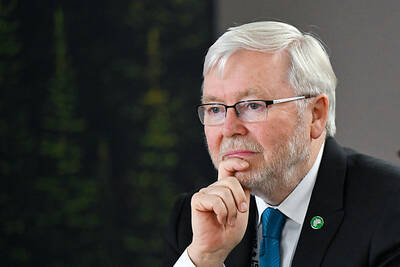Beyond fiscal stimulus and government bailouts, the economic recovery that appears under way may be based on little more than self-fulfilling prophecy.
Consider this possibility: After all these months, people start to think it’s time for the recession to end. The very thought begins to renew confidence, and some people start spending again — in turn, generating visible signs of recovery. This may seem absurd, and is rarely mentioned as an explanation for mass behavior late in a recession, but economic theorists have long been fascinated by such a possibility.
The notion isn’t as farfetched as it may appear. As we all know, recessions generally last no more than a couple of years. The current recession began in December 2007, according to the National Bureau of Economic Research, so it is almost two years old. According to the standard schedule, we’re due for recovery. Given this knowledge, the mere passage of time may spur our confidence, though no formal statistical analysis can prove it.

PHOTO: REUTERS
Certainly, people did not always believe that there is a regular “business cycle” that starts and stops in a definite pattern. The idea began to spread in the popular consciousness in the 1920s and reached full bloom in the 1930s — with one major complication, the Great Depression, which received its name in midcourse, from a 1934 book with that title by Lionel Robbins.
“There have been many depressions in modern economic history, but it is safe to say that there has never been anything to compare with this,” Robbins wrote.
In his narrative, the Great Depression was an extreme event, compared with ordinary “depressions.”
“Recession,” a kinder, gentler term, began to be used around the time of the 1937 to 1938 contraction to refer to a normal downturn in the business cycle. In January 1938, the Chicago Daily Tribune offered a wry definition of a recession, calling it “a new word for depression, coined by those who don’t like to admit that we’re still in one.”
People joked so much about the euphemism that in 1938 then-US president Franklin D. Roosevelt said: “It makes no difference to me whether you call it a recession or a depression.”
The proliferation of the idea of a more-or-less predictable business cycle intersected with a rapidly growing public interest in psychology. Choice of words can matter greatly for the psychologically aware, and the new word “recession” had a much softer sound than its predecessor. Recessions, as the term came to be used, implied timetables that mark their expected end. Uttering the word does not risk damaging confidence, at least not fundamentally. A diagnosis of a recession can be shrugged off as something from which you will recover, as though your doctor had just diagnosed an illness as a common cold. A depression came to be another matter entirely.
Back in 1931, for example, the New York Times attributed the emerging economic cataclysm to a “mood of pessimism which had been carried to grotesque extremes.” In 1932, it compared reckless talk about “depression” to shouting “fire” in a crowded theater.
Roosevelt is widely remembered for saying, in 1933, that “the only thing we have to fear is fear itself.” But he was only repeating an oft-told message.
It wasn’t until 1948 that Columbia University sociologist Robert Merton wrote an article in the Antioch Review titled “The Self-Fulfilling Prophecy,” using the Great Depression as his first example. He is often credited with having invented the “self-fulfilling prophecy” phrase, but by the 1930s the idea was already as commonplace as breakfast toast made with modern electric toasters. (Interestingly, the same Robert Merton documented the tendency for important ideas to be falsely attributed to celebrities.)
In fact, in 1937, Think and Grow Rich, a book by Napoleon Hill, urged readers to adopt a positive mental attitude and to channel the power of the subconscious mind so that real wealth would follow. It became a runaway best seller. Faddish interest had already emerged not only in Freud’s theory of the unconscious mind, but also in the theories of the psychologist Emile Coue, who urged people to recite that “every day in every way I’m getting better and better.” He said this “autosuggestion” would bolster the unconscious self.
In important ways, we are still using that 1930s pattern of thinking. We are instinctively fearful of reckless talk about depressions, and we try to support one another’s confidence. We like the idea that modern scientific economics seems to show that all recessions end in due course.
For now, our common efforts at building confidence appear to be working somewhat. But the economy has still not recovered, by any means.
Coueism has been discredited generally, as has much of the old business-cycle theory, but they live on in our popular notions about recessions. We may hope that our resorting to euphemism and belief in timetables of business-cycle recoveries work better to restore confidence than they did in the 1930s.
The problem might be put this way: There is still a nagging doubt afloat that the current event is really just another example in that long sequence of recessions. In which mental category does the current contraction belong: recession or depression? We may still be at a tipping point. To the extent that the theory of the self-fulfilling prophecy is correct, there is a case for continued vigilance, to ensure that adverse events don’t encourage widespread talk of the second category.
Also See: US economy much weaker than government numbers suggest

NEXT GENERATION: The four plants in the Central Taiwan Science Park, designated Fab 25, would consist of four 1.4-nanometer wafer manufacturing plants, TSMC said Taiwan Semiconductor Manufacturing Co (TSMC, 台積電) plans to begin construction of four new plants later this year, with the aim to officially launch production of 2-nanometer semiconductor wafers by late 2028, Central Taiwan Science Park Bureau director-general Hsu Maw-shin (許茂新) said. Hsu made the announcement at an event on Friday evening celebrating the Central Taiwan Science Park’s 22nd anniversary. The second phase of the park’s expansion would commence with the initial construction of water detention ponds and other structures aimed at soil and water conservation, Hsu said. TSMC has officially leased the land, with the Central Taiwan Science Park having handed over the

AUKUS: The Australian Ambassador to the US said his country is working with the Pentagon and he is confident that submarine issues will be resolved Australian Ambassador to the US Kevin Rudd on Friday said that if Taiwan were to fall to China’s occupation, it would unleash China’s military capacities and capabilities more broadly. He also said his country is working with the Pentagon on the US Department of Defense’s review of the AUKUS submarine project and is confident that all issues raised will be resolved. Rudd, who served as Australian prime minister from 2007 to 2010 and for three months in 2013, made the remarks at the Aspen Security Forum in Colorado and stressed the longstanding US-Australia alliance and his close relationship with the US Undersecretary

‘WORLD WAR III’: Republican Representative Marjorie Taylor Greene said the aid would inflame tensions, but her amendment was rejected 421 votes against six The US House of Representatives on Friday passed the Department of Defense Appropriations Act for fiscal 2026, which includes US$500 million for Taiwan. The bill, which totals US$831.5 billion in discretionary spending, passed in a 221-209 vote. According to the bill, the funds for Taiwan would be administered by the US Defense Security Cooperation Agency and would remain available through Sept. 30, 2027, for the Taiwan Security Cooperation Initiative. The legislation authorizes the US Secretary of Defense, with the agreement of the US Secretary of State, to use the funds to assist Taiwan in procuring defense articles and services, and military training. Republican Representative

TAIWAN IS TAIWAN: US Representative Tom Tiffany said the amendment was not controversial, as ‘Taiwan is not — nor has it ever been — part of Communist China’ The US House of Representatives on Friday passed an amendment banning the US Department of Defense from creating, buying or displaying any map that shows Taiwan as part of the People’s Republic of China (PRC). The “Honest Maps” amendment was approved in a voice vote on Friday as part of the Department of Defense Appropriations Act for the 2026 fiscal year. The amendment prohibits using any funds from the act to create, buy or display maps that show Taiwan, Kinmen, Matsu, Penghu, Wuciou (烏坵), Green Island (綠島) or Orchid Island (Lanyu, 蘭嶼) as part of the PRC. The act includes US$831.5 billion in